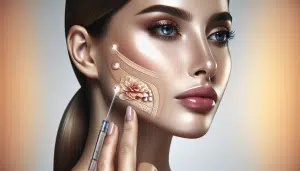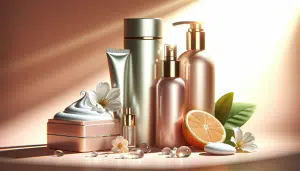Surprising Secrets For Healthy Glowing Skin You Can Use
Charlotte Stone October 14, 2025
Unlock the little-known essentials behind healthy, glowing skin that beauty enthusiasts rave about. This engaging guide covers trending routines, lifestyle habits, hydration tips, and expert-backed advice so you can discover new ways to nurture and transform your skin’s natural appearance.
Why Healthy, Glowing Skin Matters Every Day
The importance of healthy, glowing skin goes far beyond what the mirror reflects. Skin is the body’s largest organ. It shields the body against environmental threats and plays a vital role in regulation, protection, and sensation. Having radiant, well-cared-for skin can signal underlying vitality and promote a sense of confidence. When skin looks and feels its best, it can impact mood, social interactions, and even how clothing feels against the body. Many people don’t realize that skin health is closely linked to daily routines and broader wellness habits, not just the products sitting on their bathroom shelf.
Achieving a visible glow often comes down to understanding what drives real skin health. It’s about hydration, balanced nutrition, mindful sun exposure, and a routine that supports the skin’s natural cycle. Experts point out that consistency is more impactful than chasing quick fixes. Glowing skin sends a message—a combination of self-care, resilience, and attention to detail. Every layer of the skin serves a function, helping the body maintain equilibrium amid changing conditions (Source: https://www.aad.org/public/everyday-care/skin-care-basics/care/skin-care-routine).
Some individuals notice certain habits—that extra glass of water, an early bedtime, or the decision to wear SPF daily—make a real difference in their complexion. Others find that lifestyle factors, such as stress and sleep, show up as dullness or blemishes. This connection between overall wellness and external appearance is gaining renewed attention from dermatologists and holistic practitioners. When routines support both inner and outer health, results often follow. Many find that radiant skin is a sign of deeper wellbeing, not just cosmetic surface changes.
Core Habits Behind Naturally Glowing Skin
Building a routine that leads to luminous skin begins with the basics: gentle cleansing, hydration, and sun protection. Dermatologists emphasize the value of using mild cleansers that respect the skin’s barrier. Over-washing or aggressive exfoliation, contrary to popular belief, can leave skin vulnerable. Instead, gentle care helps maintain structure and prevents disruptions that trigger irritation or redness. Hydration remains a fundamental theme. Drinking enough fluids throughout the day directly supports the skin’s plumpness and elasticity.
Sun protection is non-negotiable. Even short bursts of unprotected sunlight add up over months and years, leading to premature aging, fine lines, and pigmentation. High-SPF broad-spectrum sunscreen is essential, regardless of the season. Applying it as part of your morning routine is one of the highest-impact steps for lasting glow. In addition, consistent moisturizing reinforces the skin’s natural defenses. Oils and creams featuring ceramides or hyaluronic acid help lock in moisture, supporting radiance from within (Source: https://www.cdc.gov/cancer/skin/basic_info/prevention.htm).
Nighttime routines further contribute to a healthy complexion. During sleep, the skin works to repair daily damage from stress and pollution. Using products with antioxidants or gentle retinoids may support cell turnover and protection against daily environmental stressors. Many find that introducing only one new product at a time allows the skin to adjust. Long-term, these foundational habits create a pattern of favoring gentle, consistent care over aggressive treatments or trends that offer fleeting results.
The Role of Nutrition for Radiant Skin
Nutrition and skin health share a surprising number of connections. Foods rich in antioxidants, vitamins, and healthy fats do more than fuel the body; they support the subtle mechanisms that keep skin bright and resilient. Vitamin C, for instance, is celebrated for its role in collagen synthesis and fighting oxidative stress. Meanwhile, vitamin E and zinc support the skin’s barrier and healing processes. Omega-3 fatty acids, commonly found in walnuts and flaxseed, help manage inflammation and maintain moisture levels.
Diversifying the diet with colorful fruits and vegetables can mean better protection against environmental stress and visible improvements in skin texture. Tomatoes, carrots, and leafy greens introduce a spectrum of phytochemicals and carotenoids—naturally occurring compounds that defend against UV damage. Research highlights the link between low-sugar diets and clearer skin, especially among those with sensitivity to high-glycemic foods. The pursuit of glowing skin increasingly combines what happens in the kitchen with what goes on in the bathroom (Source: https://www.ncbi.nlm.nih.gov/pmc/articles/PMC6291651/).
Some nutritionists recommend tracking how skin responds to certain dietary changes. Fluctuations in hydration, dairy intake, or refined sugar can appear as dullness, breakouts, or changes in texture. Individuals seeking an added glow frequently report benefits from increasing water, green tea, and antioxidant-rich foods. Ultimately, dietary adjustments for vibrant skin can be highly personal, but expert consensus remains: what you eat influences how the skin repairs, protects, and renews itself.
Beyond Products: Mindfulness, Sleep, and Stress Management
Healthy skin is shaped not only by external products, but by daily rhythms, emotional health, and stress management. Mindfulness practices such as meditation and breathing exercises are being linked to improved skin barrier function. Chronic stress, on the other hand, may disrupt hormones and trigger inflammation, sometimes leading to redness, breakouts, or sensitivity. Exploring relaxation techniques can indirectly support the glow you see in the mirror.
Sleep is vital. During deep rest, the body releases growth hormones that assist in tissue repair and collagen production. Poor sleep can show up as puffy eyes, uneven pigmentation, and decreased skin elasticity. Prioritizing regular bedtimes and winding down in a screen-free environment may help the skin appear brighter and smoother. Experts suggest aiming for an average of 7-9 hours of sleep for optimal skin and overall wellness (Source: https://www.sleepfoundation.org/physical-health/skin-health).
For additional support, stress-reduction methods—from yoga and tai chi to journaling and nature walks—can calm body and mind. These approaches work synergistically with healthy skincare practices. The goal becomes holistic: caring for both mind and body may deliver more sustainable softness and radiance than even the most elaborate serum selection. This approach reframes beauty as a reflection of both lifestyle and self-compassion.
Popular Ingredients And What Actually Works
The beauty industry is overflowing with product claims, but science supports a handful of standout ingredients for skin health and luminosity. Hyaluronic acid, popular for its lightweight hydration, draws water to the skin, giving it a supple, plumped-up look. Niacinamide, a form of vitamin B3, is recognized for supporting even tone and reducing visible pores. These ingredients frequently appear in both high-end and affordable lotions, highlighting their accessible benefits.
Antioxidants such as vitamin C serums are also heavily researched. When expertly formulated, these products provide added defense against environmental pollutants and help brighten skin appearance. Retinoids, derived from vitamin A, work to increase cell turnover and improve the look of fine lines but can require patience and a respectful introduction into the routine. For sensitive skin types, ceramides, colloidal oatmeal, and aloe vera provide barrier-repairing advantages with relatively few side effects (Source: https://www.health.harvard.edu/blog/skin-care-products-and-ingredients-what-really-works-2020022818857).
It’s important to remember that glowing skin is rarely about a single miracle product. Combining effective, science-backed ingredients with gentle routines and healthy habits is what delivers visible, long-term changes. Many find lasting glow when they focus on foundational steps and introduce new ingredients gradually, paying attention to how their skin uniquely responds. Checking for credible clinical data behind ingredients helps to inform smarter, safer choices for both short- and long-term skin goals.
Trends, Myths, and What to Avoid
Beauty trends come and go, but not all fads will benefit your skin. For instance, over-exfoliation and aggressive home peels have risen in popularity, yet they risk damaging the skin’s natural protective layer. DIY skincare with household items—like lemon juice or baking soda—can disrupt the skin’s pH and cause irritation. Experts recommend focusing on science-backed methods instead of viral internet advice when pursuing a glow-up.
Some myths persist about pore size, detoxing through skin, or magic quick fixes. In reality, pores don’t open or close at will, and true detoxification relies on internal organs more than topical treatments. The skincare industry’s claims can be confusing, urging consumers to look for transparent ingredient lists and reputable testing. Following board-certified dermatologists and established medical guidelines reduces risk and helps set realistic expectations (Source: https://www.fda.gov/cosmetics/cosmetic-products/skincare-products).
Being mindful of your skin’s response to new routines, rather than copying others, builds more sustainable results. Patch testing new products and introducing changes slowly prevents unnecessary flare-ups. While beauty trends can be entertaining to follow, sustainable skin health rests on facts, not fleeting internet tips. Choosing what to avoid is as critical as what to include for maintaining natural radiance and long-term skin resilience.
References
1. American Academy of Dermatology. (n.d.). How to create an effective skin care routine. Retrieved from https://www.aad.org/public/everyday-care/skin-care-basics/care/skin-care-routine
2. Centers for Disease Control and Prevention. (n.d.). Skin cancer prevention. Retrieved from https://www.cdc.gov/cancer/skin/basic_info/prevention.htm
3. Bowe, W. P. (2019). Diet and acne. Dermato-Endocrinology, 4(3), 202–211. Retrieved from https://www.ncbi.nlm.nih.gov/pmc/articles/PMC6291651/
4. Sleep Foundation. (n.d.). Sleep and skin health. Retrieved from https://www.sleepfoundation.org/physical-health/skin-health
5. Harvard Health Publishing. (2020). Skin-care products and ingredients: What really works. Retrieved from https://www.health.harvard.edu/blog/skin-care-products-and-ingredients-what-really-works-2020022818857
6. U.S. Food and Drug Administration. (n.d.). Skincare products. Retrieved from https://www.fda.gov/cosmetics/cosmetic-products/skincare-products







